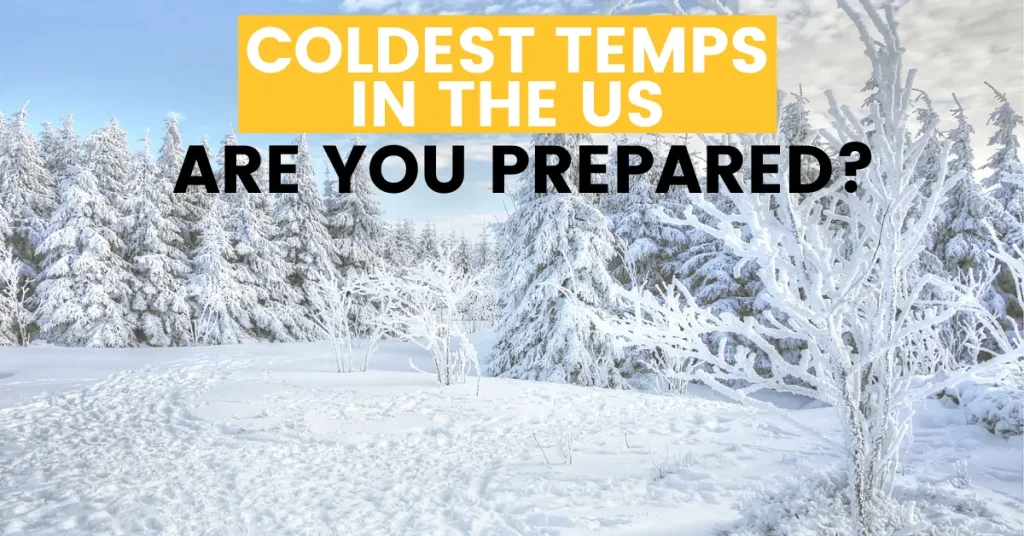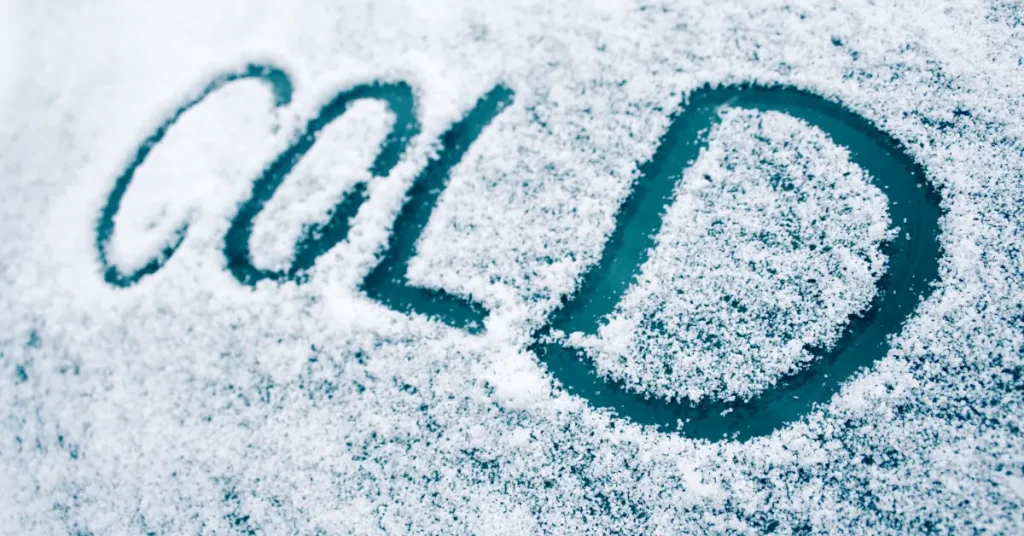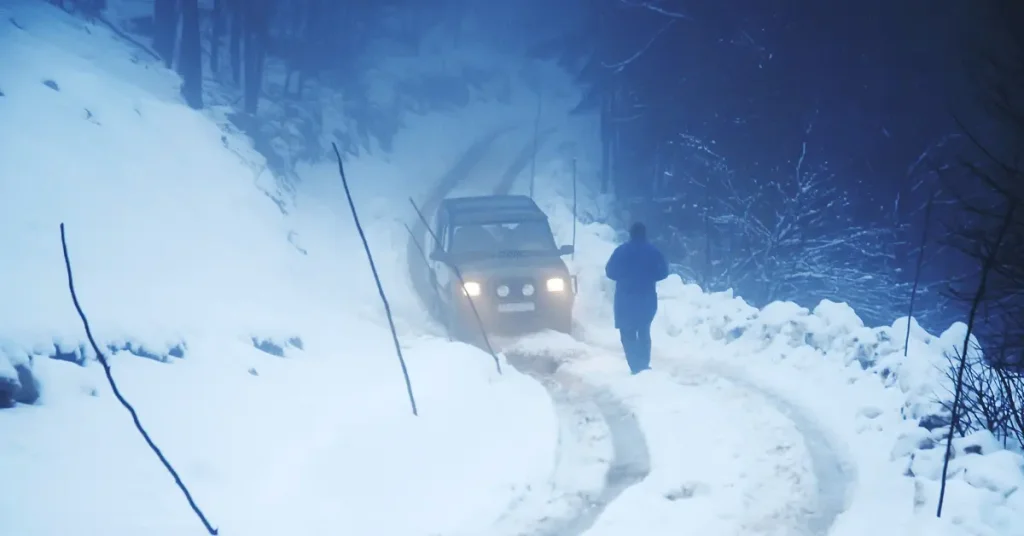As we brace for the cold winter months, temperatures across the country are dropping to dangerous and threatening temperatures. In our headquarter state of Utah, we just hit the lowest temperature on record for Monday, January 30, 2023 in the entire US. Peter Sinks in Utah hit an incredible -62°F on that day! This extreme cold, especially in our own backyard, is a harsh reminder of the importance of emergency preparedness and backup power.

When the temperatures drop to extreme lows, it’s crucial to take precautions to avoid conditions like frostbite and hypothermia. According to the National Weather Service, a wind chill of -20° Fahrenheit (F) will cause frostbite in just 30 minutes. Frostbite occurs when the body tissue is damaged due to extreme cold, leading to a loss of feeling and a pale appearance in parts of the body such as fingers, toes, earlobes, or the nose. If frostbite symptoms are detected, it’s important to get medical help right away. If help is not immediately available, it’s best to slowly rewarm affected areas, but if the person is also showing signs of hypothermia, it’s essential to warm the body core first before the extremities.
Hypothermia is a life-threatening condition that occurs when the body temperature drops to below 95°F. It can cause lasting damage to the kidney, liver, and pancreas, even if the person survives. The warning signs of hypothermia include uncontrollable shivering, memory loss, disorientation, incoherence, slurred speech, drowsiness, and apparent exhaustion. If someone’s temperature drops below 95°F, it’s critical to seek medical care immediately.

The harsh winter months can bring with them extreme cold temperatures, making it vital to be prepared for the worst. Whether you’re at home, camping, or on the road, it’s essential to be equipped with the proper gear and knowledge to stay safe in low temperatures.
When it comes to facing extreme cold weather, it’s important to wear the right clothing to keep your body temperature controlled. It’s crucial to protect yourself from frostbite and hypothermia by dressing in layers, covering exposed skin, and staying dry and out of the wind.
Here are some tips for dressing for the cold:
Winter weather can be harsh, with snow, ice, and freezing temperatures making roads slippery and dangerous. That’s why it’s important to make sure your car is prepared for the winter season. Here are some tips to get you started.
Service Your Car: Regular maintenance is crucial for keeping your car running smoothly, especially during the winter months. Get a tune-up to ensure your engine and battery are in good condition, and check your brakes and tires for wear and tear. Make sure your windshield wipers and defrosting systems are working properly, and consider getting winter tires if you live in an area with heavy snowfall.
Drive Safely: Winter driving requires extra caution and a different approach than during other times of the year. Leave plenty of space between you and the car in front of you, and drive slower than the posted speed limit. Use low gears when driving on snow-covered roads to maintain better control, and avoid sudden stops and starts. And of course, always wear a seatbelt. Always wear your seatbelt. Fastening your seatbelt decreases the likelihood of getting hurt in a car crash by over 45%, always make sure to put it on!
Pack a Winter Car Emergency Kit: If you get stuck in a winter storm, it’s important to be prepared. Pack a winter car emergency kit that includes a shovel, ice scraper, blankets, flashlights, extra clothing, and non-perishable food and water. Keep a fully charged cell phone in the car, and make sure you have a car charger in case you need it.

When it comes to power outages caused by extreme weather, it’s always better to be safe than sorry. One way to ensure you have backup power when you need it is to invest in a portable solar generator. Solar power is a reliable source of energy that is not dependent on the grid, making it the perfect solution for emergency preparedness.
With a portable solar generator, you’ll never have to worry about being without power during a storm or other emergency. Whether you’re camping, RVing, or just need backup power at home, a solar generator can provide you with the energy you need to keep your lights on, your appliances running, and your phone charged.
The Point Zero Energy Titan Generator is one of the best options on the market. With a 3000 Watt High Efficiency Inverter and 2000wh capacity, the Titan is capable of powering your devices, radios, fans, refrigerator, freezer, heat and other major appliances. And with its portable design and easy-to-carry handle, you can take it with you wherever you go.
As the cold weather sets in, it’s important to take steps to protect your pets, livestock, and property from the elements. If you have pets, such as dogs or cats, make sure they have a warm and cozy place to sleep and plenty of food and water. Outdoor pets should have proper shelter from the wind, rain, and snow, and should not be left outside for long periods of time. If your pets need to go outside, make sure to supervise them and keep them on a leash if necessary.
For livestock, make sure they have access to food and water and that their shelters are well-insulated and dry. Provide extra bedding to keep them warm and consider providing windbreaks to protect them from the cold winds. Make sure to check on them regularly, especially during extreme weather conditions.
In addition to protecting your pets and livestock, it’s important to take steps to protect your property from the cold weather. Take precautions to ensure your water pipes do not freeze, which can cause them to burst. Consider insulating pipes and wrapping outdoor faucets to prevent freezing. Know the temperature thresholds of your plants and crops and take steps to protect them if necessary.
As the winter weather continues to bring harsh conditions, it’s crucial to be prepared. With extreme cold temperatures comes the potential for frostbite and hypothermia, which can have serious health consequences. To protect yourself, it’s essential to dress appropriately for the cold, wearing layers of loose-fitting, synthetic clothing and covering your head and extremities. If you have pets or livestock, make sure they are well taken care of, and take steps to prevent water pipes from freezing and protect your plants and crops from the cold. Additionally, investing in a portable solar generator, like the Point Zero Energy Titan, is a smart and reliable way to ensure that you have backup power in the event of an emergency. By staying prepared, you can feel confident and secure, no matter what the weather may bring.
Stay safe, stay warm! ❄️
